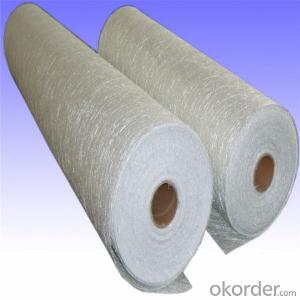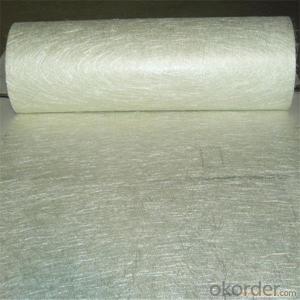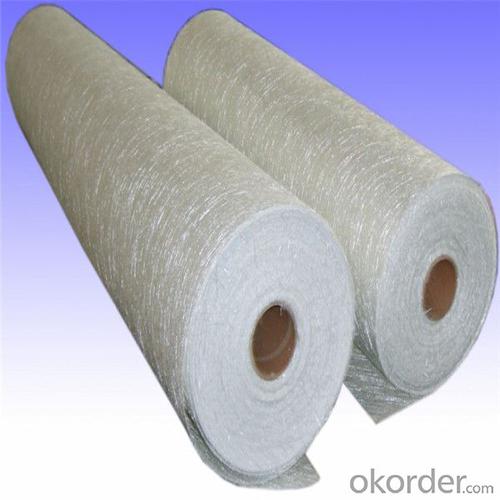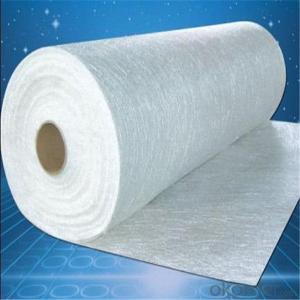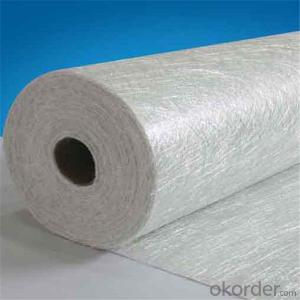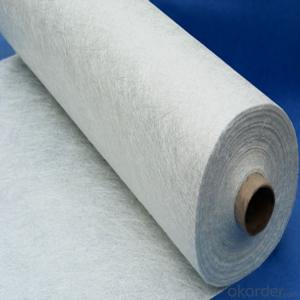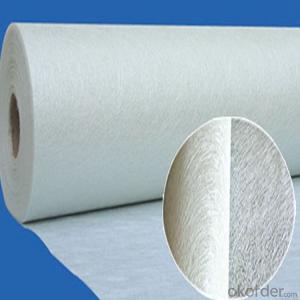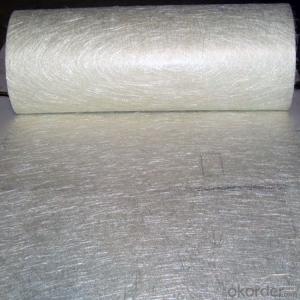Fiberglass Chopped Strand Mat Cloth E-Glass Fiberglass Chopped Strand Mat for Ceiling
- Loading Port:
- Tianjin
- Payment Terms:
- TT OR LC
- Min Order Qty:
- 100 m.t.
- Supply Capability:
- 20000 m.t./month
OKorder Service Pledge
Quality Product, Order Online Tracking, Timely Delivery
OKorder Financial Service
Credit Rating, Credit Services, Credit Purchasing
You Might Also Like
Quick Details
| Technique: | Chopped Strand Fiberglass Mat (CSM) | Dimensions: | 450gsm | Mat Type: | Continuous Filament Mat |
| Fiberglass Type: | E-Glass | Softness: | softness | Place of Origin: | Jiangxi, China (Mainland) |
| Brand Name: | cnbm | Model Number: | 450gsm | color: | white |
| fiberglass type: | E glass | product: | e-glass powder chopped stand mats | binder: | powder or emulsion |
| width: | 1040 or 1270mm, as your requirement | weight: | 30 or 45kg/roll | paper tube diameter: | 90mm |
| outer diameter of roll: | 256mm | packing: | plastic film+carton box + pallet |
Packaging & Delivery
| Packaging Details: | plastic film+carton box + pallet |
| Delivery Detail: | 15-20days |
Specifications
1.e-glass powder chopped stand mats
2.binder:power or emulsion
3.width:1040mm or 1270mm
4.weight:450gsm
Picture

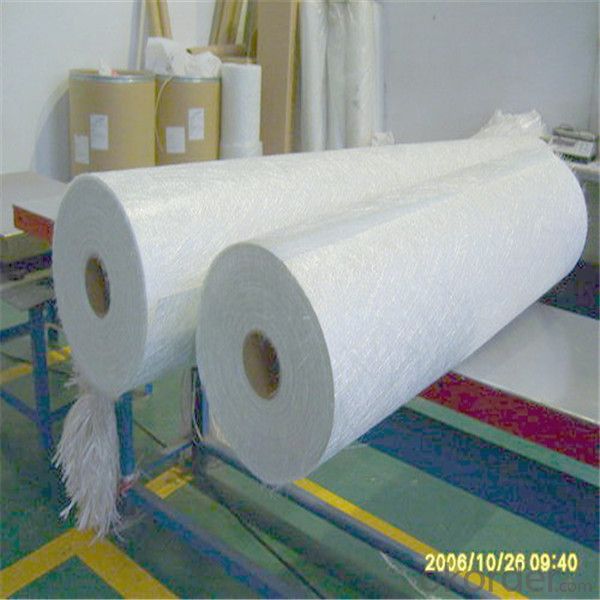




- Q: Can fiberglass chopped strand be used in the production of insulation boards?
- Indeed, insulation boards can be manufactured by utilizing fiberglass chopped strand. This particular material, commonly employed as a reinforcement component, is frequently found in a variety of applications, including insulation boards. It boasts exceptional thermal insulation characteristics, in addition to its considerable strength and long-lasting nature. Typically, the chopped strands are combined with a resin binder and other additives to create a uniform mixture, subsequently molded into insulation boards of preferred dimensions and shapes. By incorporating fiberglass chopped strand, the structural integrity and insulating capabilities of the boards are significantly enhanced, rendering them suitable for implementation across an array of industries, encompassing construction, automotive, and aerospace sectors.
- Q: What is the impact resistance of fiberglass chopped strand?
- Fiberglass chopped strand exhibits a significant level of impact resistance. Renowned for its exceptional strength and durability, fiberglass retains these attributes even when cut into smaller strands. The strands are typically of varying lengths and orientations, effectively dispersing impact forces throughout the material and enhancing its resistance to damage. Consequently, fiberglass chopped strand is widely favored in applications where impact resistance is crucial, such as automotive components, construction materials, and sporting gear. Moreover, utilizing fiberglass chopped strand in composites can further augment the final product's impact resistance. In summary, fiberglass chopped strand is esteemed for its capacity to withstand substantial levels of impact, offering a reliable and long-lasting solution for diverse industries.
- Q: What are the fire safety considerations when using fiberglass chopped strand?
- When using fiberglass chopped strand, it is important to consider fire safety measures. Fiberglass can melt and burn, releasing toxic fumes and smoke in the event of a fire. Therefore, it is crucial to store fiberglass chopped strand in a designated area away from potential ignition sources and flammable materials. Additionally, having proper fire detection systems, such as smoke detectors and fire extinguishers, is essential to quickly respond to any fire emergencies. It is also recommended to have fire-resistant protective clothing and equipment when working with fiberglass chopped strand to minimize the risk of burns or injuries. Overall, prioritizing fire safety precautions and being aware of the potential hazards associated with fiberglass chopped strand is crucial for a safe and secure working environment.
- Q: Can fiberglass chopped strand be used in the production of electrical connectors?
- Yes, fiberglass chopped strand can be used in the production of electrical connectors. It is commonly used as a reinforcement material in plastic molding processes, providing added strength and durability to the connectors.
- Q: What is the tensile strength of fiberglass chopped strand?
- The tensile strength of fiberglass chopped strand can vary depending on the specific composition and manufacturing process, but it typically ranges from 200 to 600 megapascals (MPa).
- Q: Is fiberglass chopped strand compatible with different coating methods?
- Yes, fiberglass chopped strand is compatible with different coating methods. It can be used with various coating techniques such as spray-up, hand lay-up, and filament winding, making it a versatile option for different applications and industries.
- Q: Is fiberglass chopped strand compatible with different release agents?
- Yes, fiberglass chopped strand is generally compatible with different release agents. However, it is important to ensure that the specific release agent chosen is compatible with the resin system being used and meets the requirements of the application.
- Q: How is fiberglass chopped strand used in the construction industry?
- The construction industry widely utilizes fiberglass chopped strand for a variety of applications. One primary use of this material is in the production of fiberglass reinforced polymers (FRP) and composites, which are extensively employed in construction. In construction, fiberglass chopped strand is commonly employed as a reinforcement material in concrete and mortar. It aids in enhancing the strength, durability, and flexibility of these materials, rendering them more resistant to cracks, impacts, and other forms of damage. By incorporating fiberglass chopped strand into the concrete or mortar mixture, the resulting composite material becomes lighter, stronger, and more resistant to weathering and corrosion. This proves particularly beneficial in construction projects that demand high-performance materials like bridges, tunnels, and precast concrete elements. Additionally, fiberglass chopped strand finds usage in the manufacturing of insulation materials used in buildings. It is regularly added to insulation boards, panels, and spray foams to improve their thermal, acoustic, and fire-resistant properties. Fiberglass chopped strand assists in reducing heat transfer, noise transmission, and fire spread, thereby enhancing the energy efficiency and safety of buildings. Furthermore, fiberglass chopped strand is utilized in the production of various construction components including pipes, tanks, doors, windows, and roofing materials. By incorporating chopped strand into the manufacturing process, these components acquire additional strength, rigidity, and resistance to environmental factors. Fiberglass chopped strand also aids in reducing the weight of these components, making them easier to handle and install. To summarize, fiberglass chopped strand assumes a crucial role in the construction industry by providing reinforcement, strength, durability, and other desirable properties to various construction materials and components. Its extensive usage in concrete, insulation materials, and construction components contributes to the development of high-performance, energy-efficient, and safe buildings.
- Q: Is fiberglass chopped strand suitable for automotive body panels?
- Automotive body panels can be made using fiberglass chopped strand, which is a versatile material with several advantages for automotive applications. By being lightweight, it helps enhance fuel efficiency and overall vehicle performance. Additionally, its excellent strength-to-weight ratio makes it a durable option that can withstand impacts and resist deformation. The ability of chopped strand fiberglass to be easily molded and shaped into complex designs makes it particularly suitable for automotive body panels. This involves mixing the fiberglass strands with a resin matrix and then utilizing various molding techniques like compression molding or injection molding. Hence, this allows for the creation of body panels with precise dimensions and contours, ensuring a seamless fit on the vehicle. Besides, fiberglass exhibits good corrosion resistance, which is vital for automotive applications where body panels are exposed to diverse weather conditions and environmental factors. Furthermore, it possesses admirable thermal and electrical insulation properties, enhancing its suitability for automotive body panels. Overall, fiberglass chopped strand is an appropriate material for automotive body panels as it offers lightweight, durability, ease of molding, and resistance to corrosion. It has been extensively utilized in the automotive industry for many years and remains a favored choice for manufacturers.
- Q: How is fiberglass chopped strand made?
- Fiberglass chopped strand is made by first melting glass in a furnace and then extruding it through tiny holes to form continuous filaments. These filaments are then chopped into shorter lengths using special cutting equipment, resulting in the production of fiberglass chopped strand.
Send your message to us
Fiberglass Chopped Strand Mat Cloth E-Glass Fiberglass Chopped Strand Mat for Ceiling
- Loading Port:
- Tianjin
- Payment Terms:
- TT OR LC
- Min Order Qty:
- 100 m.t.
- Supply Capability:
- 20000 m.t./month
OKorder Service Pledge
Quality Product, Order Online Tracking, Timely Delivery
OKorder Financial Service
Credit Rating, Credit Services, Credit Purchasing
Similar products
Hot products
Hot Searches
Related keywords
